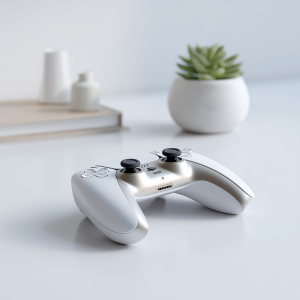Ever felt like you’re juggling a million things and not getting anywhere? That’s where the Getting Things Done method can help. This Getting Things Done method guide breaks down the GTD approach, making it simple for you to manage tasks efficiently without the stress. It’s about capturing everything in your head, organizing it outside your brain, and focusing on what really matters. Whether you’re new to GTD or looking to refine your system, this guide will walk you through the process step by step.
Key Takeaways
- GTD is about capturing tasks and organizing them outside your mind.
- Setting up a GTD workflow can improve focus and reduce stress.
- Both digital and paper tools can be used for GTD, depending on preference.
- Regular reviews are crucial to maintaining an effective GTD system.
- Understanding the pros and cons of GTD helps tailor it to individual needs.
What Is GTD and What Principles Underlie It?

Getting Things Done, or GTD for short, is a productivity system created by David Allen. It’s all about getting your tasks out of your head and into a system you trust. This way, your brain can focus on doing tasks rather than remembering them. The main idea is to free your mind from clutter, so you can concentrate on the task at hand.
The 3 Principles of GTD: Capturing, Clarifying, Organizing
- Capturing: This is where you gather all your tasks, ideas, and to-dos into one place. It doesn’t matter if it’s a notebook, an app, or even a napkin. Just make sure you capture everything that’s on your mind.
- Clarifying: Once you’ve captured your tasks, it’s time to clarify them. Ask yourself, “What is this task really about?” and “Is it actionable?” If it is, decide what the next action is. If not, either trash it, file it for reference, or put it on a “someday” list.
- Organizing: Now that your tasks are clear, organize them into categories or lists that make sense to you. This could be based on context, priority, or deadline. The goal is to have a system where you can easily find and decide what to work on next.
GTD is not just about doing more; it’s about doing more of what matters. By following these principles, you create a workflow that helps you manage your time and tasks efficiently. Remember, your mind is for having ideas, not holding them.
How Can You Set Up a GTD Workflow Step by Step?
Setting up a GTD workflow is like assembling a puzzle. You need to find the right pieces and fit them together in a way that makes sense for you. Here’s a step-by-step guide to help you get started with your GTD implementation.
Gathering and Processing Tasks
The first step in your GTD journey is gathering all those loose thoughts and tasks floating around in your head. Think of it as a brain dump. Here’s how you can do it:
- Write It All Down: Grab a notebook, or open a digital app, and jot down everything you need to remember. From grocery lists to project deadlines, get it all out.
- Organize Your Inbox: Create an inbox where all these tasks can live temporarily. This can be a physical tray or a digital folder.
- Clarify Each Task: Look at each item in your inbox and decide what needs to be done. Is it actionable? If not, toss it or file it for reference.
Establishing Contexts
Once your tasks are organized, it’s time to set up contexts. This is about grouping tasks by the tools, locations, or people involved. Here’s how to do it:
- Contextual Grouping: Group tasks by where they can be done or the tools needed. For example, tasks that require a computer, phone calls, or errands.
- Prioritize by Energy: Consider your energy levels when assigning tasks. Some tasks are better suited for when you’re fresh and alert, while others can be done when you’re winding down.
- Use Context Tags: In your task management tool, use tags or labels to mark contexts. This way, you can quickly pull up all tasks that fit a specific context.
Establishing contexts helps you focus on similar tasks, reducing the mental overhead of constantly switching gears.
By following these steps, you’ll have a solid GTD workflow that keeps your tasks organized and your mind clear. Remember, the key is consistency and regular reviews to keep the system running smoothly. Happy organizing!
Which Tools Complement the GTD Process?
Digital Versus Paper Systems for GTD
When it comes to the Getting Things Done (GTD) method, choosing the right tools can make or break your productivity. Digital tools and paper systems each have their unique strengths, and finding the right mix is key to mastering GTD.
Digital Tools
Digital tools are like having a personal assistant who never complains. They help keep track of tasks, remind us of deadlines, and even give us a nudge when it’s time to take a break. Here are a few favorites:
- Todoist: This app is a lifesaver for organizing tasks. You can create projects, set priorities, and even collaborate with others if you’re feeling particularly social.
- Trello: If you’re a visual person, Trello’s board system is fantastic. It’s like having a digital corkboard with sticky notes that you can move around.
- Forest: Need to stay focused? Plant a tree in the app, and it grows while you work. Leave the app, and your tree dies. It’s a fun way to keep you on task.
Physical Tools
Sometimes, going old school with physical tools can be just as effective. There’s something satisfying about crossing items off a list with a pen.
- Bullet Journal: This is a customizable planner system that can be as simple or detailed as you like. It’s great for those who like to doodle while planning.
- Pomodoro Timer: A kitchen timer or a dedicated Pomodoro timer can help break work into manageable chunks. Work for 25 minutes, then take a 5-minute break.
- Wall Calendar: A big, bold calendar on your wall can give you a monthly overview at a glance, helping to avoid scheduling conflicts.
Embracing these tools can make the difference between feeling overwhelmed and feeling on top of your game. It’s all about finding what clicks for you.
Remember, it’s not about using every tool out there—it’s about finding the ones that fit into your life seamlessly. So go ahead, give them a try, and watch your productivity soar!
For those looking to dive deeper into GTD and explore apps like FacileThings, which are perfect for both beginners and seasoned practitioners, explore high-impact tips for mastering the GTD methodology to enhance productivity and streamline task management.
How Do You Maintain and Refine Your GTD System?
Scheduling Regular Reviews
Keeping your GTD system running smoothly isn’t just about setting it up and letting it be. Regular reviews are the backbone of maintaining an effective GTD system. Here’s how you can incorporate them into your routine:
- Daily Reviews: At the end of each day, take a few minutes to reflect on what you’ve accomplished and what needs attention tomorrow. This helps you start each day fresh and focused.
- Weekly Reviews: Set aside time each week to go through your tasks and projects. Check off completed items, adjust deadlines, and reorganize priorities. This is your chance to ensure nothing slips through the cracks.
- Monthly and Yearly Reviews: These are for the big picture. Look at your goals and see if you’re on track. Adjust your strategies if needed.
“Reflecting regularly on your tasks and goals not only keeps you organized but also gives you a sense of control over your time.”
By integrating these reviews into your workflow, you create a cycle of continuous improvement. It’s not about doing more but doing what matters most efficiently. Remember, productivity isn’t just about crossing off tasks—it’s about making meaningful progress towards your goals.
For more insights on balancing essential tasks with enjoying life, explore mastering time.
Advantages and Limitations of GTD

Benefits of Structured Task Management
The Getting Things Done (GTD) method is a game-changer for many when it comes to boosting productivity. One of the standout benefits is its ability to declutter your mind and reduce cognitive load. By capturing tasks in a reliable system, you eliminate the constant mental juggling act. This leaves you with a clearer headspace to focus on the tasks at hand.
Here’s why GTD might be your new best friend:
- Eliminates Indecision: With a structured approach, you know exactly what to tackle next.
- Reduces Cognitive Load: No more trying to remember every little detail.
- Declutters the Mind: Frees up mental space for creative thinking.
- Enhances Organization: Keeps your tasks and projects systematically arranged.
“Adopting a detailed GTD for productivity can transform how you manage your day-to-day tasks, making you feel more in control and less overwhelmed.”
Considerations for Maintaining the System
While GTD has its perks, it’s not without its challenges. Setting up the system initially can be time-consuming, especially if you’re transitioning from a less structured approach.
Some potential hurdles include:
- Setup Time: Getting everything into the system takes effort.
- Flexibility Issues: GTD organizes tasks but doesn’t dictate when to do them, which can be tricky for some.
- Maintenance: Regular reviews are essential to keep the system effective.
For those who find GTD too open-ended, combining it with techniques like time blocking might offer a more balanced approach. It’s all about finding what fits best into your lifestyle.
In conclusion, while GTD can be a powerful tool for structured task management, it requires commitment and regular maintenance to truly reap its benefits. But once you get the hang of it, the clarity it brings can be a game-changer. Explore more benefits of the GTD method.
Conclusion
Alright, folks, we’ve reached the end of our GTD journey. So, what’s the takeaway? Well, the GTD method isn’t just about ticking off tasks like a robot. It’s about clearing the mental clutter so you can focus on what really matters. Think of it as giving your brain a much-needed break from juggling a million things at once. By capturing everything in a trusted system, you’re freeing up mental space to actually get stuff done. And hey, it’s not about being perfect. It’s about finding a rhythm that works for you. So, give it a shot, tweak it to fit your style, and see how it transforms your productivity game. Remember, it’s all about progress, not perfection. Happy organizing!
Frequently Asked Questions
What is the GTD method?
The GTD method, or Getting Things Done, is a way to organize tasks and ideas. It helps you keep track of what you need to do by writing everything down so you can focus on doing, not just remembering.
How do I start using GTD?
To start using GTD, begin by writing down all the tasks and ideas in your head. Then, sort them into categories like ‘do now,’ ‘schedule for later,’ or ‘save for reference.’ This helps you know what to work on first.
What are the key steps in GTD?
The key steps in GTD are capturing tasks, clarifying what needs to be done, organizing tasks, reviewing them regularly, and doing the tasks. These steps help keep your work organized and manageable.
Why is GTD helpful?
GTD is helpful because it reduces stress by keeping your tasks organized. It helps you focus on what needs to be done right now, so you don’t feel overwhelmed by everything else.
Can I use GTD with digital tools?
Yes, you can use GTD with digital tools like apps and online calendars. These tools can help you keep track of your tasks and remind you of deadlines, making it easier to stay organized.
Is GTD only for work tasks?
No, GTD can be used for both work and personal tasks. It helps you organize any kind of task, whether it’s for school, home, or work, so you can manage your time better.
How often should I review my GTD system?
It’s a good idea to review your GTD system at least once a week. This helps you see what’s working, what needs to be changed, and what tasks you need to focus on next.
What if I don’t have time to organize my tasks?
If you don’t have time to organize your tasks, start small. Spend just a few minutes each day writing down what you need to do. Over time, this will help you feel more in control of your tasks.








